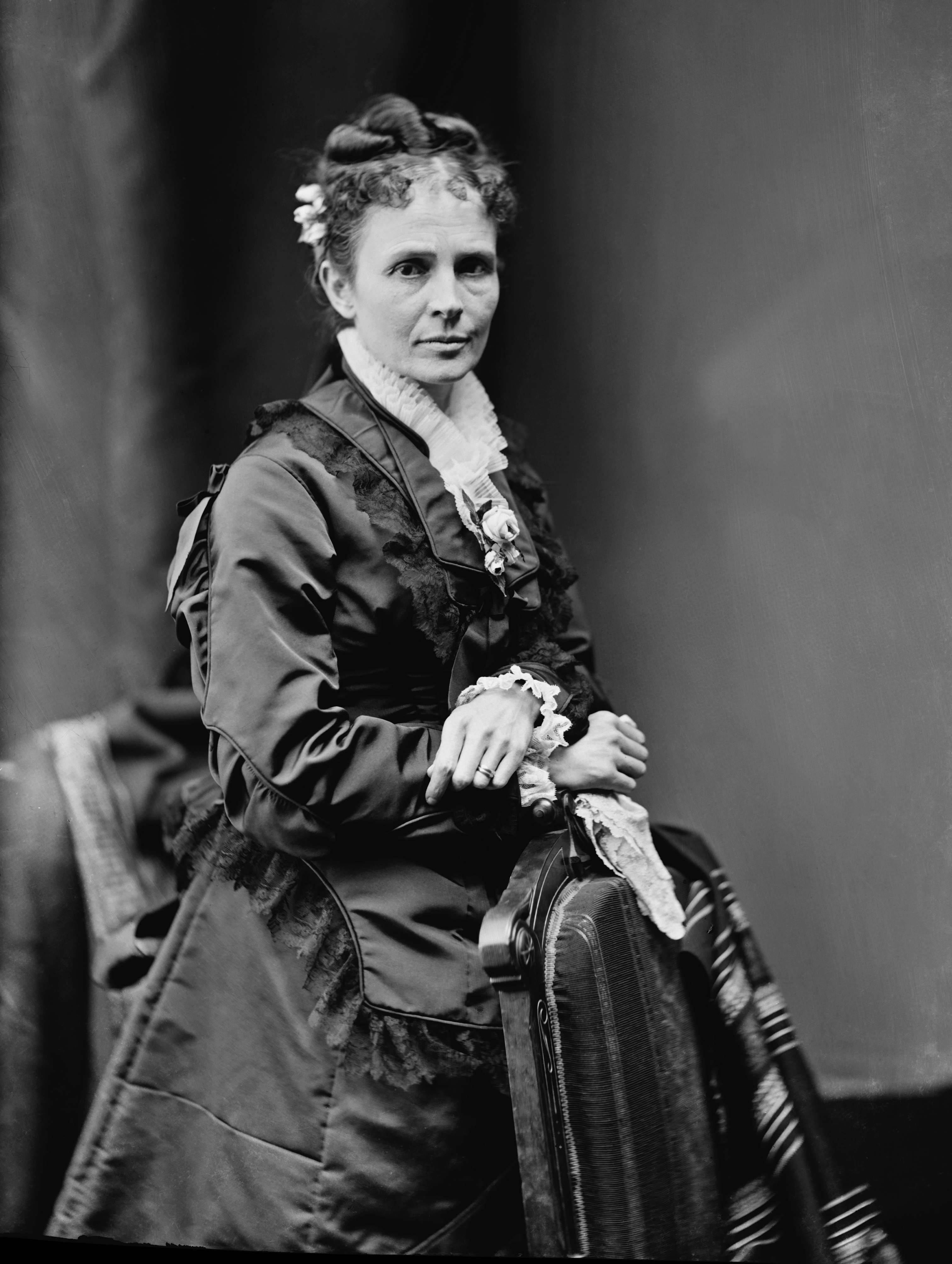
Lucretia Garfield
Lucretia Garfield (née Rudolph; April 19, 1832 – March 14, 1918) was the first lady of the United States from March to September 1881, as the wife of James A. Garfield, the 20th president of the United States.
Lucretia Garfield
Born in Garrettsville, Ohio, Garfield first met her husband at Geauga Seminary. After a long courtship, they married in 1858. Their early years were difficult, as James was often away and became romantically involved with other women. They would eventually have seven children together, five of whom lived to adulthood. Highly educated and knowledgeable of Washington politics, Garfield was a regular adviser for her husband, and she assisted him in his front porch campaign for the presidency. She was well regarded during her brief period in the White House, but after only a few months contracted malaria and went to Long Branch, New Jersey, to recuperate.
On July 2 1881, her husband was shot and mortally wounded by Charles Guiteau. He remained on his deathbed for months, during which time his wife stayed at his bedside and received much public sympathy. Garfield returned to her former residence in Ohio after being widowed, and she spent much of the rest of her life preserving her husband's papers and other materials, establishing what was effectively the first presidential library.
Early life[edit]
Lucretia "Crete" Rudolph was born in Garrettsville, Ohio, on April 19, 1832. She was the daughter of carpenter Zebulon Rudolph and Arabella Mason Rudolph, the first of four children.[1]: 134 She was raised as a member of the Disciples of Christ.[2]: 155 Rudolph was often in poor health as a child, suffering from respiratory issues.[3]: 231 Spending long periods of time bedridden as a child, she developed a love for reading.[1]: 134 [3]: 231 Her family was reserved, with very few outward shows of affection.[4]: 255
Rudolph learned household skills from her mother, such as cleaning and cooking, as was common for girls at the time. Her parents also decided to have her receive a formal education, which was less common, and she attended the town's grammar school.[4]: 255 She then attended the Geauga Seminary in Chester Township, Ohio, at same time as James A. Garfield. Her father co-founded the Western Reserve Eclectic Institute (now Hiram College), and she began attending the school in 1850.[1]: 134 Here she pursued her interest in literature, starting a literary group and contributing to a school magazine. James attended the school as well, and he also took on a teaching position, becoming one of Randolph's teachers.[4]: 256 Rudolph expressed beliefs that women were capable of their own achievements in society and that they should receive equal pay in employment, though she abandoned these beliefs after leaving college.[2]: 156 [3]: 232
Rudolph and Garfield began a personal correspondence in November 1853, and they agreed to marry in early 1854. They began a courtship by letter when Garfield moved away to attend Williams College.[1]: 134 Garfield first noticed her for her intelligence,[5]: 98 though he discouraged her from overexerting herself in her studies.[1]: 134 Rudolph became a teacher, instructing classes in Cleveland and Ravenna, Ohio.[6] The strength of their relationship fluctuated over the following years, as Garfield lamented Rudolph's reserved demeanor.[2]: 156–157 At one point, Garfield began a relationship with another woman, Rebecca Selleck, while he attended Williams College.[4]: 256 Only after returning home and being allowed to read Rudolph's diary did Garfield realize the extent of her commitment.[3]: 233
First Lady of the United States[edit]
White House hostess[edit]
Garfield became first lady on March 4, 1881, after her husband was inaugurated as President of the United States.[4]: 259 Her hosting responsibilities as first lady went far beyond those that were expected of her when she was a Congressional wife, and she sought advice from Blaine's wife, Harriet.[1]: 137 [3]: 238 Her interest was in the opportunity to meet prominent writers and artists, and she entered the White House with a list of names she wished to invite.[7]: 238 Garfield paid more attention to political aspects of the role than the social aspects, and the president kept her updated on happenings in Washington that were not known to the public.[7]: 239 Though she believed in gender equality, she rejected the women's suffrage movement, feeling that women had yet to embrace education, which she believed was necessary before equality could be achieved.[7]: 240
Unlike her predecessor, Lucy Webb Hayes, Garfield did not have strong opinions about the temperance movement, and she resumed the serving of alcohol at White House events.[4]: 259 This was a decision of some political consequence, as the temperance movement was a predominantly Republican voting bloc, but the banning of alcohol displeased prominent Washington figures and foreign diplomats.[3]: 238–239 She dismissed the temperance advocates lobbying her to reinstate the ban, determining that alcohol in the White House was a small aspect of temperance receiving disproportionate attention.[7]: 238–239
As her tenure began, Garfield took on the responsibility of refurbishing the White House and lobbying Congress for funding to this end.[3]: 239 She took particular interest in White House history, and she often visited the Library of Congress to research the building.[7]: 240 Garfield participated in only one interview while she was first lady, in which she freely spoke about politics and her support for Blaine.[7]: 239
![]() Media related to Lucretia Garfield at Wikimedia Commons
Media related to Lucretia Garfield at Wikimedia Commons